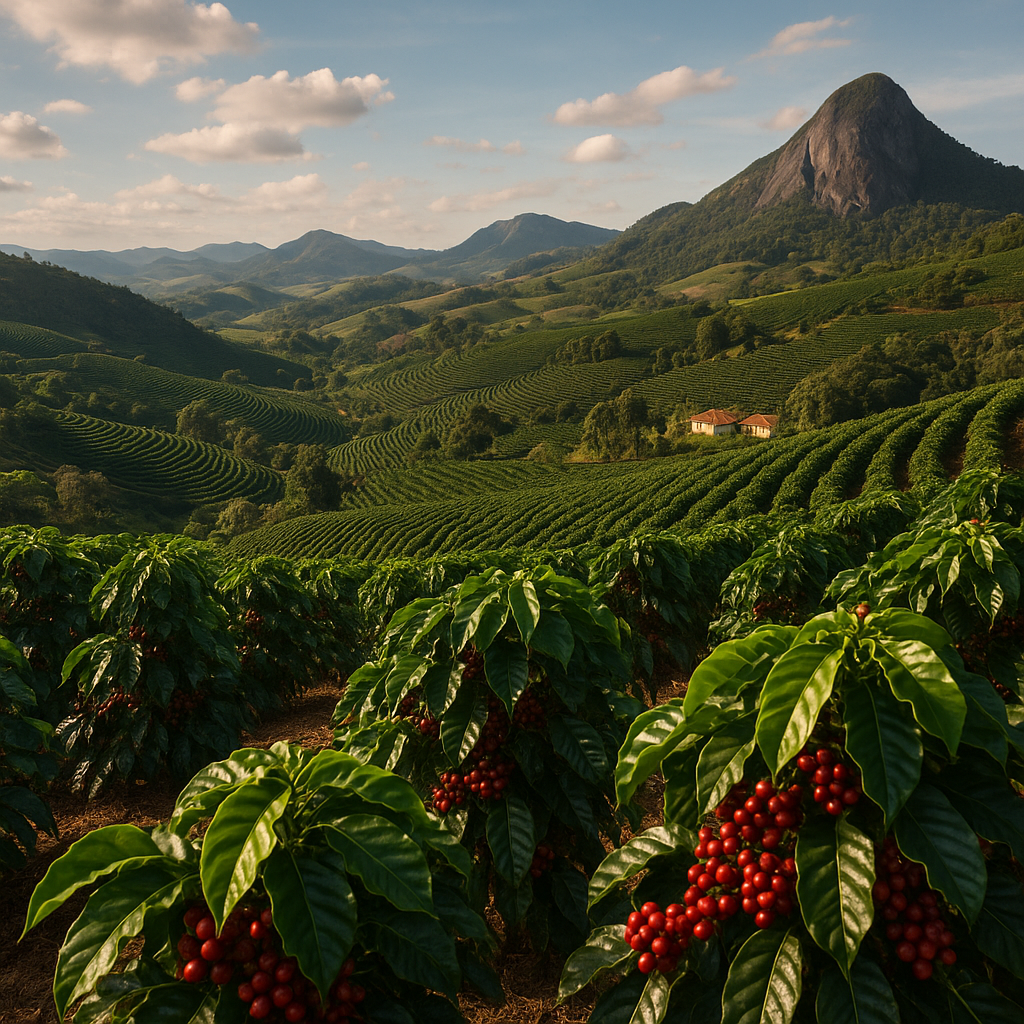Brazil is not just the world’s largest coffee producer; it is also home to some of the finest and most diverse coffee-growing regions on the planet. The country’s vast territory, varied climate, and rich soil make it ideal for cultivating different coffee profiles, from sweet and nutty to fruity and complex. In this article, we’ll explore the top coffee-growing regions in Brazil and what makes each one unique.
Why Brazil Is Perfect for Coffee Cultivation
Several factors contribute to Brazil’s success as a coffee powerhouse:
- Climate: Tropical and subtropical conditions provide ample rainfall and sunshine.
- Soil: Rich, fertile soils, especially the red “terra roxa,” are ideal for coffee plants.
- Altitude: Higher elevations contribute to the development of more complex flavors.
- Infrastructure: Centuries of investment in agriculture ensure efficient production and export.
Brazil’s coffee industry benefits from both small family farms and large estates, producing a wide range of beans that suit every coffee lover’s taste.
Key Coffee-Growing Regions in Brazil
Minas Gerais
Minas Gerais is the heart of Brazilian coffee production, responsible for nearly 50% of the country’s output. Its vast territory offers several microclimates perfect for specialty coffees.
- Famous Sub-Regions: Sul de Minas, Cerrado Mineiro, Chapada de Minas.
- Flavor Profile: Chocolatey, nutty, sweet, with medium acidity and smooth body.
- Altitude: Ranges from 800 to 1,400 meters.
Cerrado Mineiro was the first region in Brazil to receive a designation of origin (similar to a wine appellation), guaranteeing unique characteristics from its terroir.
São Paulo
The state of São Paulo, especially the region of Mogiana, is known for its rich coffee heritage.
- Flavor Profile: Sweet, full-bodied, low acidity, often with chocolate and caramel notes.
- Altitude: Between 800 and 1,100 meters.
Mogiana coffees are highly consistent and balanced, making them popular in espresso blends around the world.
Espírito Santo
Espírito Santo is the largest producer of Robusta (Conilon) coffee in Brazil but also offers exceptional Arabica beans from its mountainous areas.
- Flavor Profile: Bright acidity, fruity and floral notes in Arabicas; bold and earthy in Robustas.
- Altitude: Arabicas are grown at 700 to 1,200 meters.
This state is gaining increasing recognition in specialty coffee circles, particularly for its innovative farmers.
Bahia
Bahia is a rising star in Brazil’s specialty coffee scene, with high-tech farming practices and ideal growing conditions.
- Famous Sub-Regions: Chapada Diamantina, Planalto da Bahia.
- Flavor Profile: Citrusy, floral, elegant, with a bright acidity.
- Altitude: Between 850 and 1,300 meters.
Bahia’s coffees often impress with their complexity and clean flavors.
Paraná
Although its production has declined due to past frosts, Paraná remains an important part of Brazil’s coffee history.
- Flavor Profile: Sweet, mild, often used in high-quality blends.
- Altitude: Around 800 meters.
Efforts are underway to revitalize Paraná’s coffee production with a focus on specialty beans.
What Makes Brazilian Coffee Unique?
- Natural Processing: Many Brazilian coffees are naturally processed, meaning the beans are dried inside the fruit. This often results in a heavier body and sweeter flavor.
- Varietals: Brazil cultivates many different coffee varieties such as Bourbon, Mundo Novo, Catuaí, and Yellow Bourbon.
- Consistency: Brazilian coffees are known for their reliability, making them a foundation in many coffee blends.
Whether enjoyed as a single-origin or part of a blend, Brazilian coffee offers remarkable versatility and richness.
Final Thoughts: Exploring Brazil Through Coffee
Every coffee region in Brazil offers a new sensory adventure. From the chocolatey depths of Minas Gerais to the bright florals of Bahia, Brazil’s coffee landscape is as vast and diverse as the country itself.
If you want to explore Brazilian coffee at home, look for single-origin offerings that specify the region—they’re a delicious way to travel without leaving your kitchen.
